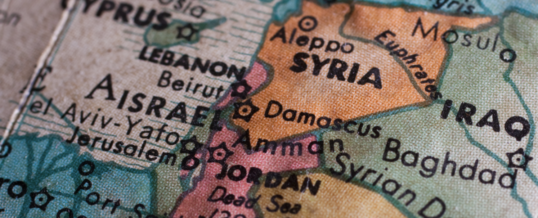
KANSAS CITY, MISSOURI, US — Nothing threatens the stability of a nation or region more than food insecurity. And sadly, as the world also continues to deal with the global COVID-19 pandemic, including the economic hardship stemming from it, the list of countries falling into the food insecure category is growing.
The Food and Agriculture Organization of the United Nations (FAO) and the World Food Programme (WFP) in March issued an early warning for urgent humanitarian action in 20 food insecure countries that are described as being in “catastrophic situations.” Seventeen of the 20 are located in sub-Saharan Africa and the Middle East.
One specific area of concern is Lebanon and neighboring Syria. The countries are intertwined in many ways as many refugees from war-torn Syria have migrated in recent years to Lebanon, which had been comparatively stable until late 2019 when its economy took a severe downturn followed by the pandemic in early 2020. A difficult economic situation became even more dire on Aug. 4, 2020, when an explosion at the Port of Beirut destroyed a grain storage complex that accounted for 85% of Lebanon’s yearly grain supply, which is almost entirely imported.
The blast, which left 300,000 people homeless and occurred because the government negligently stored a large amount of ammonium nitrate at the port, led to the resignation of Prime Minister Hassan Diab. But, due to political infighting, he has yet to be replaced and thus the government is completely dysfunctional.
As of late March, the value of Lebanon’s currency had plunged by more than 80%, leading food inflation to soar by an almost unfathomable 402%. Reports that the government may be unable to sustain its subsidy program for basic items such as bread is very troubling. The FAO report noted that the Lebanese central bank’s “expected suspension of the allocation of US dollars at the official rate in favor of importers of wheat, essential medicines and fuel, is likely to lead to a further increase in prices of basic goods. Combined with a lack of economic growth and employment opportunities, it will likely dramatically affect the livelihoods of poor Lebanese and refugee households.”
At the end of 2020, 19% of Lebanese nationals and 21% of Syrian refugees had reported the loss of their main sources of income. As a result, the proportion of Syrian refugees living in extreme poverty reached a staggering 89%, up from 55% in 2019.
“Against this backdrop, civil unrest and violent clashes could become more frequent,” the report said.
Meanwhile, Syria is mired in a decade-long civil war. Significant destruction of infrastructure during the conflict has led to severe wheat shortages and, in turn, a shortage of bread. The WFP in February estimated that 12.4 million people out of a total population of 16 million were food insecure, an increase of 3.1 million over the previous year.
Although the dire predicaments in these countries are to some extent self-inflicted due to corrupt and dysfunctional governments, those currently suffering are innocent victims, which makes it incumbent on the international community to find ways to help.
It’s fitting that bread, in Egyptian Arabic, is called aish, which literally means life, because for millions of people in at least 20 countries right now, securing a loaf of bread may literally be a matter of life and death.
APR
2021


About the Author: